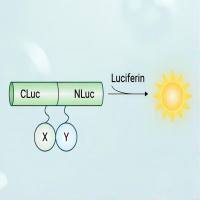Imaging Individual Myosin Molecules Within Living Cells
互联网
636
Myosins are mechano-enzymes that convert the chemical energy of ATP hydrolysis into mechanical work. They are involved in diverse biological functions including muscle contraction, cell migration, cell division, hearing, and vision. All myosins have an N-terminal globular domain, or “head” that binds actin, hydrolyses ATP, and produces force and movement. The C-terminal “tail” region is highly divergent amongst myosin types, and this part of the molecule is responsible for determining the cellular role of each myosin. Many myosins bind to cell membranes. Their membrane-binding domains vary, specifying which lipid each myosin binds to. To directly observe the movement and localisation of individual myosins within the living cell, we have developed methods to visualise single fluorescently labelled molecules, track them in space and time, and gather a sufficient number of individual observations so that we can draw statistically valid conclusions about their biochemical and biophysical behaviour. Specifically, we can use this approach to determine the affinity of the myosin for different binding partners, and the nature of the movements that the myosins undergo, whether they cluster into larger molecular complexes and so forth. Here, we describe methods to visualise individual myosins as they move around inside live mammalian cells, using myosin-10 and myosin-6 as examples for this type of approach.









